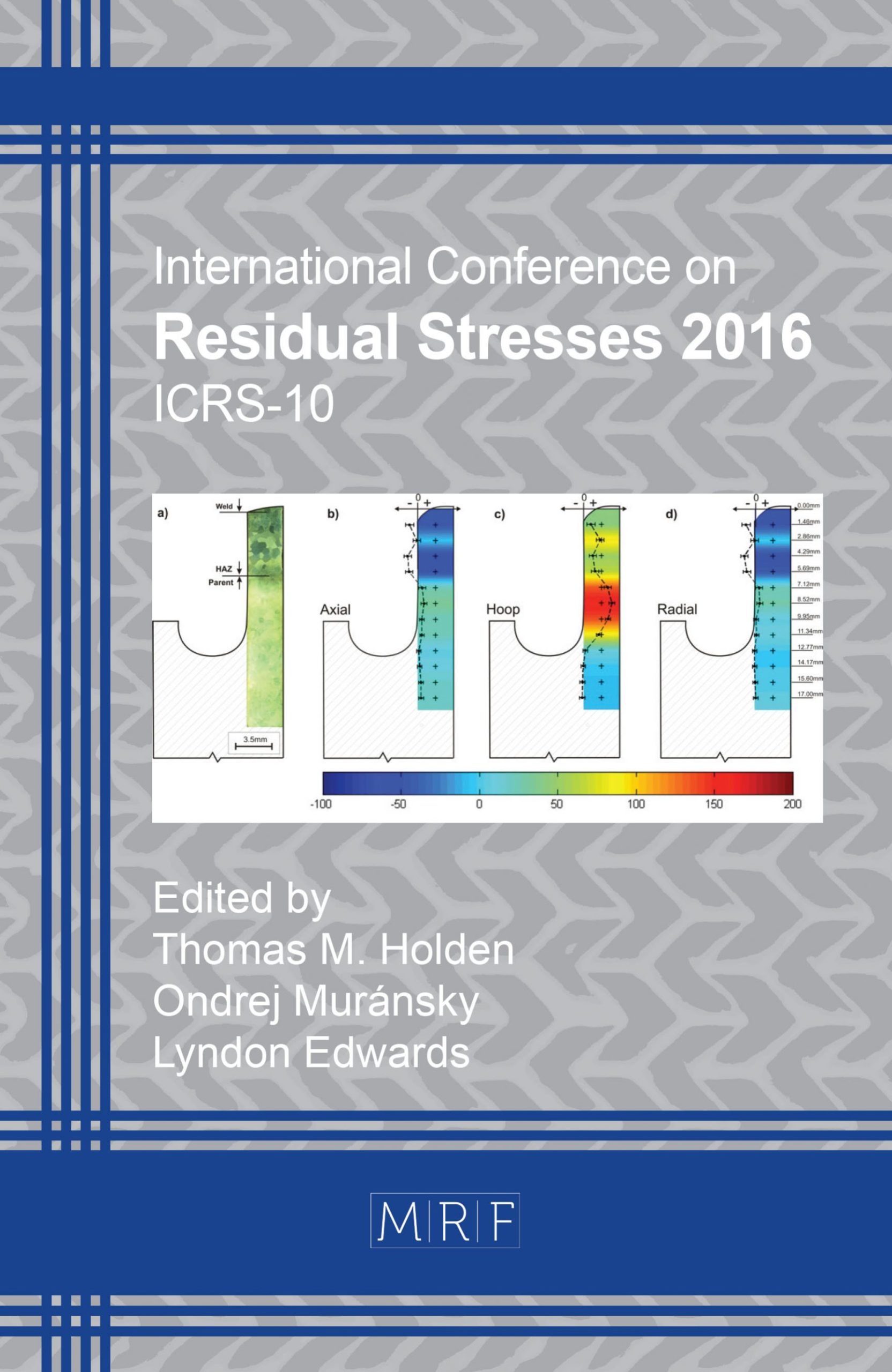Residual Stress Condition of Tubular Laser Welds of an AZ31 Magnesium Alloy
T. Nitschke-Pagel, K. Dilger
download PDFAbstract. Laser welded overlap tubular joints of an AZ31 magnesium alloy show an unexpected failure behaviour under axial and tensional cyclic loading. In the as-welded condition the fatigue cracks propagate not from the locations with the highest load stress concentration but from other sites. After a stress relief annealing at relatively low temperatures the crack initiation sites change to the expected locations This specific behaviour can be found on overlap connections of tubular joints as well as in aluminium as in magnesium alloy joints. Combined FE-calculations and residual stress measurements by means of XRD and neutron diffraction reveal that the particular constraint conditions of tubular joints lead to residual stress distributions which are distinguished remarkably from those of flat plates with linear welds due to the self-constraining geometry. The generation of a non-uniform circumferential residual stress condition with particular locations of high tensile and compressive residual stresses may explain the observed failure behaviour. After an annealing process with strong residual stress relaxation the fatigue cracks start at the expected locations. A shrinkage model for the description of the residual stress generation in tubular joints explains the local residual stresses over the entire thickness in the weld zones and in the adjacent material.
Keywords
Magnesium Alloy, Laser Welding, Welding Residual Stresses, Numerical Model
Published online 12/22/2016, 6 pages
Copyright © 2016 by the author(s)
Published under license by Materials Research Forum LLC., Millersville PA, USA
Citation: T. Nitschke-Pagel, K. Dilger, ‘Residual Stress Condition of Tubular Laser Welds of an AZ31 Magnesium Alloy’, Materials Research Proceedings, Vol. 2, pp 277-282, 2017
DOI: http://dx.doi.org/10.21741/9781945291173-47
The article was published as article 47 of the book Residual Stresses 2016
![]() Content from this work may be used under the terms of the Creative Commons Attribution 3.0 licence. Any further distribution of this work must maintain attribution to the author(s) and the title of the work, journal citation and DOI.
Content from this work may be used under the terms of the Creative Commons Attribution 3.0 licence. Any further distribution of this work must maintain attribution to the author(s) and the title of the work, journal citation and DOI.
References
[1] Sonsino,C.M.; Fricke,W.; Radaj,D.: Fatigue assessment of welded joints by local approaches.2nd edition. Woodhead publishing Ltd., Cambridge (UK), 2006
[2] Exel,N.: PhD-Thesis, TH Darmstadt 2014, Shaker Verlag Aachen
[3] Noster,U.:PhD-Thesis, Universität Kassel 2003, Forschungsberichte aus dem Institut für Werkstofftechnik – Metallische Werkstoffe, Band 5.
[4] Krauß,M.: PhD-Thesis, Universität Kassel 2006, Forschungsberichte aus dem Institut für Werkstofftechnik – Metallische Werkstoffe, Band 8.
[5] Masny,H.; Ouaissa,B.: Bundesministerium für BMWi, Bonn * (2003) Seite 1-112































